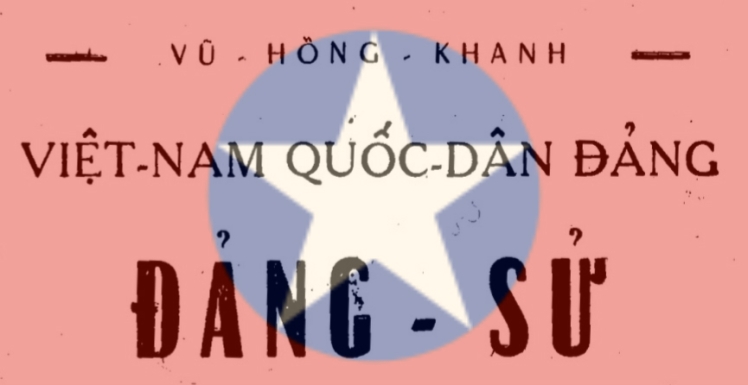
As far as I know, Vũ Hồng Khanh’s self-published history of the Vietnam Nationalist Party (Việt Nam Quốc Dân Đảng or VNQDD) is not held by any libraries in the US, Europe, or Vietnam. It covers events from before the party’s founding to the aftermath of the 1930 Yên Bái uprising.
Khanh was an early leader of the VNQDD and an intimate of its founder, Nguyễn Thái Học. He self-published this history in 1966. Khanh gave a copy to Calvin Mehlert, a Foreign Service Officer who spent much of his career working in Vietnam. [Cal has many distinctions. One in particular comes to mind: in 1955 he and five sailors from the Republic of China sailed a junk, dubbed ‘The Free China’, from Taiwan to San Francisco.] Cal generously loaned me his copy of Vũ Hồng Khanh’s history to scan.
Attached here is a PDF of the book. Vũ Hồng Khanh, Vietnam Nationalist Party: A Party History [Việt-Nam Quốc-Dân Đảng: Đảng-Sử]” (Saigon: self-published by author, 1966).

Vũ Hồng Khanh led an interesting life. After taking part in the Yên Bái uprising in 1930, he fled to southern China where he continued to organize Vietnamese emigres. He began training and teaching at some of the Kuomintang’s famous military schools, including Whampoa.
After the defeat of Japan in 1945, Khanh and other Vietnamese nationalist revolutionaries, including Nguyễn Hải Thân, returned to Vietnam and took part in the Democratic Republic of Vietnam (DRV) government. Khanh took a top-level, defense ministerial post. He and Hồ Chí Minh signed the 1946 accords with Jean Sainteny — an act that fractured the VNQDD into two factions, one favoring Khanh and the other supporting the more intransigent Nhất Linh (Nguyễn Tường Tam).
That summer, however, the VNQDD and other nationalist groups clashed with the DRV government. The VNQDD and others accused the Indochinese Communist Party (ICP) of arrogating power for its members within the DRV government. Soon a civil war broke out between the VNQDD forces of Vũ Hồng Khanh and those under the control of Võ Nguyên

Giáp. Khanh’s troops were routed. What remained of the units fled back into southern China. There Vũ Hồng Khanh worked to rebuild a small armed force with the Chinese Kuomintang’s tentative support.
In 1949, as Mao Zedong’s troops pushed the Kuomintang off the mainland, Vũ Hồng Khanh took his force across the Sino-Vietnamese border and attacked both the DRV and French forces. Surrounded, he surrendered. Khanh agreed to recognize the French-sponsored non-communist State of Vietnam, led by chief of state Bảo Đại. For a time he organized pacification in the northern highlands of Tonkin.
In 1952 Vũ Hồng Khanh joined the State of Vietnam ‘unity’ cabinet under Prime Minister Nguyễn Văn Tâm, where he served as Minister of Youth and Sports. The cabinet drew upon numerous figures like Khanh and Cùng Đình Quỳ (see above picture), both former anti-colonial revolutionaries affiliated with the VNQDD. After 1955, the State of Vietnam was truncated by the 1954 Geneva Accords and Ngô Đình Diệm consolidated power as the new prime minister. As Diệm obtained more power, he suspected Vũ Hồng Khanh of undermining his regime. But he largely remained out of the spotlight.
After 1975, the Socialist Republic of Vietnam confined Vũ Hồng Khanh in a re-education camp. He spent 11 years imprisoned, released only in 1986 at the age of 88. He died in 1993.